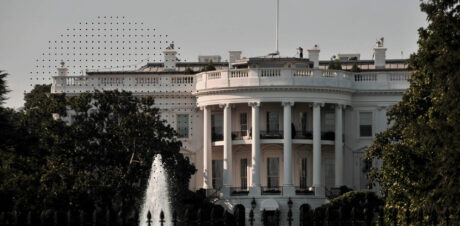Mexico President Claudia Sheinbaum issued a decree on December 19, 2024 intended to protect the Mexican textile industry by cracking down on duty-free apparel imports. The decree, effective January 1, 2025, sets the following new tariff amounts:
- 35 percent for 138 Harmonized Tariff Schedule (HTS) codes that classify finished textile and apparel products
- 15 percent for 17 HTS codes that classify textile inputs
The tariffs are currently in effect until April 2026. Products qualifying under the US-Mexico-Canada Agreement (USMCA) are exempt from the tariffs.
The decree also revises Mexico’s Program of Manufacturing Industry, Maquila and Export Services (IMMEX), which previously allowed for duty-free imports of intermediary goods to the U.S.
What’s behind the revised tariffs and restrictions
With these actions, the Mexican government is looking to strengthen the market environment for local manufacturers. The textile industry in Mexico generates around 400,000 jobs; however, Mexico’s Secretary of Economy says 79,000 jobs have been lost in the industry in recent years. The decree is intended to avoid practices that affect employment and competitiveness, and to prioritize trade with markets with which Mexico has trade agreements. Notably, China – the source of many low-priced imports – is not one of these markets.
The IMMEX program allows foreign companies to import raw materials and components into Mexico duty-free for manufacturing or assembly before exporting them, under the condition that 100% of all finished goods will be exported out of Mexico within a government-mandated time frame.
Apparel brands have used the IMMEX program to import goods to Mexico duty-free. Then, these goods are exported to the U.S. using de minimis provisions, allowing the brands to save costs on tariffs. The CEO at one supply chain logistics provider contends, “At least 30 of the top 100 American brands on Shopify now fulfill from just across the Mexican border, mostly in Tijuana, to avoid U.S. customs duties.”
Mexico’s recent actions increase the list of products that cannot be imported through IMMEX. Goods classified under HTS chapters 61 (articles of apparel and clothing accessories, knitted or crocheted), 62 (articles of apparel and clothing accessories, not knitted or crocheted), and 63 (other made up textile articles; sets; worn clothing and worn textile articles; rags) will no longer be allowed to enter on a temporary basis.
The impact of Mexico’s actions
Brands will see an increase in the cost of products transported through Mexico and potential disruptions to their supply chains. Third-party logistics providers servicing cross-border shipments from Mexico are also impacted.
Specific impacts that both U.S.-based and non-U.S.-based fashion and lifestyle brands will encounter include:
- Increased costs due to higher tariffs on importing goods into Mexico for re-export to the U.S.
- Loss of some IMMEX duty-free benefits
- Supply chain disruptions as organizations modify sourcing, manufacturing, and distribution operations
- Compliance adjustments to navigate updated tariff classifications
Mexico’s actions will likely be particularly disruptive to China-based retail companies that route imports through Mexico for distribution in the U.S.
Stephen Lamar, President and CEO of American Apparel & Footwear Association (AAFA), calling for a pause in these actions, stated: “Mexico has now become more expensive and more unpredictable. This does not bode well for future trade and investment partnerships with the U.S. textile and apparel industry and its retail customers at a time when an increasingly chaotic sourcing environment and rising costs are doing battle with budget conscious consumers.”
How Sayari can help manage supply chain disruption
Mexico’s decree highlights the necessity for enterprises to have robust supply chain flexibility, especially if these chains span multiple countries. In addition, the decree is another example of the critical importance of organizations staying on top of the latest regulations and new requirements.
Sayari Map is a powerful supply chain risk management tool that can assist businesses in responding to changing regulatory environments. The platform empowers supply chain risk management, sourcing, and procurement teams to assess the locations of sub-tier supply chains and strengthen resilience through diversification. Map can also help determine whether an organization’s products satisfy rules of origin for trade programs such as CAFTA-DR.
For more information on how Sayari Map can help you respond to supply chain disruption, watch our webinar on automated supply chain mapping and risk identification.



